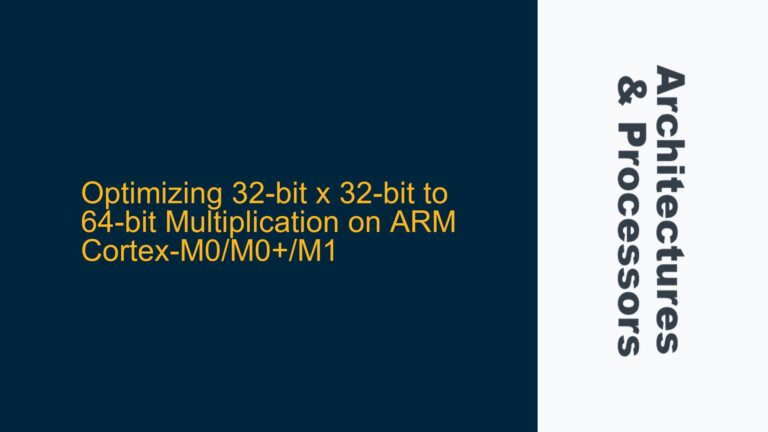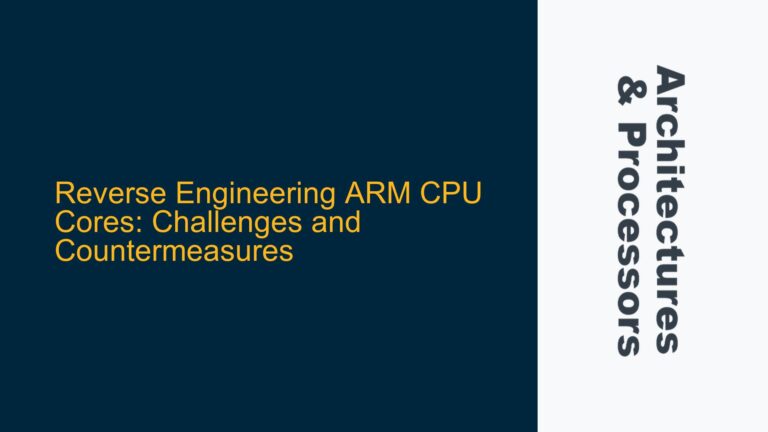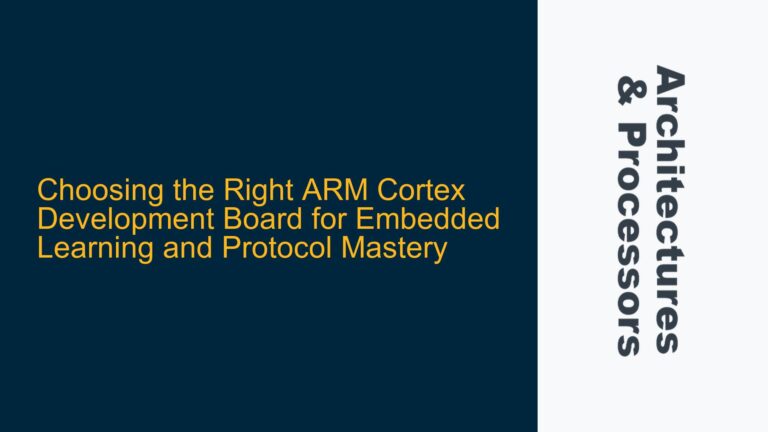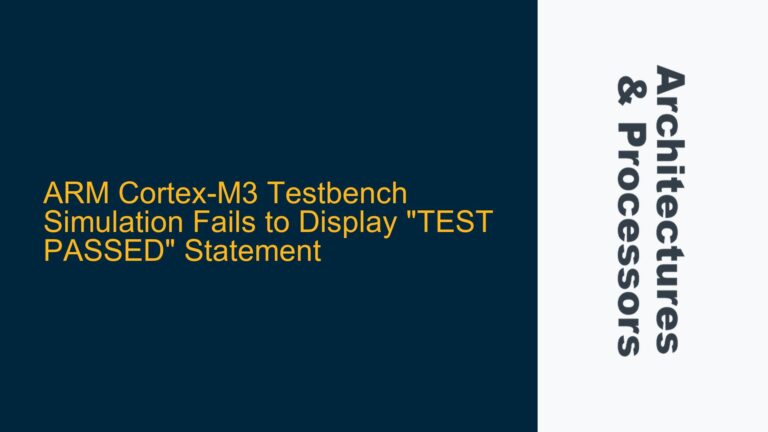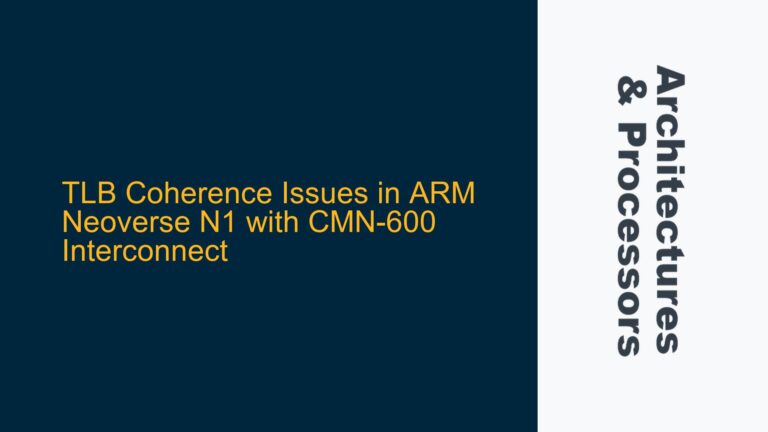Big-Endian Support Challenges in ARMv7-R Toolchain Configuration
The ARM architecture, particularly the ARMv7-R profile, is widely used in real-time embedded systems due to its deterministic performance and robust feature set. However, one of the persistent challenges in configuring toolchains for ARMv7-R processors, such as the TI TMS570 series, is the lack of out-of-the-box support for big-endian mode. Big-endian mode, where the most significant byte of a word is stored at the lowest memory address, is a critical requirement for certain legacy systems and specific applications. The absence of big-endian support in mainstream toolchains like ARM Ltd./Linaro creates significant hurdles for developers working on these platforms.
The core of the issue lies in the multi-lib configuration of the GCC toolchain, which determines how the compiler handles different architectural variants, including endianness. The multi-lib build system in GCC is designed to generate multiple libraries for different combinations of architecture, CPU, and endianness. However, the default configuration for ARMv7-R does not include big-endian support, necessitating manual patching of the toolchain. This patching process involves modifying the t-rmprofile file, which defines the multi-lib configurations for the ARM architecture. The syntax of this file is notoriously complex, and even minor errors can lead to compilation failures or incorrect code generation.
The challenge is further compounded by the fact that big-endian support was briefly included in the bleeding-edge-toolchain script but was removed due to the lack of maintenance and testing. The original contributor who added the big-endian patch did not continue to support it, and without access to hardware for testing, the maintainer of the toolchain had no choice but to remove the feature. This highlights the importance of community involvement in maintaining niche features like big-endian support, as well as the need for robust testing infrastructure to ensure compatibility across different hardware platforms.
Multi-Lib Configuration and Syntax Complexity in GCC
The primary cause of the big-endian support issue is the complexity of the multi-lib configuration system in GCC. The t-rmprofile file, which is responsible for defining the multi-lib configurations for ARM architectures, uses a cryptic syntax that is difficult to understand and modify. This file specifies the combinations of architecture, CPU, and endianness that the toolchain should support, and any errors in this file can lead to incomplete or incorrect library generation.
For example, the t-rmprofile file defines multi-lib configurations using a series of rules that specify the compiler flags and library paths for each combination of architecture and endianness. These rules must be carefully crafted to ensure that the correct libraries are built and linked during the compilation process. However, the syntax for these rules is not well-documented, and even experienced developers may struggle to understand how to modify the file to add support for new configurations.
Another contributing factor is the lack of automated testing for big-endian configurations. Without access to hardware that supports big-endian mode, it is difficult to verify that the toolchain is generating correct code. This lack of testing infrastructure makes it challenging to maintain big-endian support in the toolchain, as any changes to the multi-lib configuration must be manually verified to ensure compatibility with the target hardware.
Additionally, the integration of big-endian support into the bleeding-edge-toolchain script requires careful coordination with the upstream GCC development process. The GCC mainline periodically merges changes to the multi-lib configuration system, and any patches for big-endian support must be updated to align with these changes. This requires a deep understanding of both the GCC codebase and the ARM architecture, as well as a commitment to maintaining the patch over time.
Implementing and Testing Big-Endian Support in ARMv7-R Toolchains
To address the big-endian support issue in ARMv7-R toolchains, developers must follow a systematic approach that includes modifying the multi-lib configuration, building and testing the toolchain, and integrating the changes into the bleeding-edge-toolchain script. The first step is to obtain the latest version of the t-rmprofile file from the GCC repository and apply the necessary patches to add big-endian support. This involves adding new rules to the file that specify the compiler flags and library paths for big-endian configurations.
Once the t-rmprofile file has been modified, the next step is to build the toolchain with the updated configuration. This process involves running the bleeding-edge-toolchain script with the appropriate options to enable big-endian support. The script will generate the necessary libraries and binaries for the target architecture, including the big-endian variants. It is important to carefully review the build logs to ensure that the toolchain is generating the correct libraries and that there are no errors during the build process.
After the toolchain has been built, the next step is to test the generated binaries on the target hardware. This involves compiling a simple test program that exercises the big-endian mode and verifying that the program behaves as expected. The test program should include a variety of data types and operations to ensure that the toolchain is correctly handling endianness. If any issues are identified during testing, the t-rmprofile file may need to be further modified to correct the problem.
Once the toolchain has been successfully tested, the final step is to integrate the changes into the bleeding-edge-toolchain script. This involves creating a patch file that contains the modifications to the t-rmprofile file and updating the script to apply the patch during the build process. The patch file should be carefully documented to ensure that other developers can understand and maintain the changes. Additionally, the script should be updated to include automated testing for big-endian configurations, if possible, to ensure that the feature remains functional in future releases.
In conclusion, adding big-endian support to ARMv7-R toolchains is a complex but achievable task that requires a deep understanding of the GCC multi-lib configuration system and the ARM architecture. By following a systematic approach that includes modifying the t-rmprofile file, building and testing the toolchain, and integrating the changes into the bleeding-edge-toolchain script, developers can successfully enable big-endian support for their projects. This process highlights the importance of community involvement and robust testing infrastructure in maintaining niche features in open-source toolchains.

